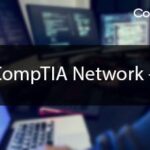Ultimate Guide for Cyber Security Interview Question With Answers

Ultimate Guide for Cyber Security Interview Question With Answers
Launch Your Career in Cyber Security: The Ultimate Guide
Today In this article, you will read some best Cyber Security Interview Question Answers. Which Helps you in an interview. Let’s Read
1. What is the difference between an IP address and a Mac address?
IP address: To every device, an IP address is assigned so that the device can be located on the network. In other words, the IP address is like your postal address, where anyone who knows your postal address can send you a letter.
MAC (Machine Access Control) address: A MAC address is a unique serial number assigned to every network interface on every device. Mac address is like your physical mailbox, only your postal carrier (network router) can identify it, and you can change it by getting a new mailbox (network card) at any time and slapping your name (IP address) on it.
2. List out some of the common tools used by Ethical hackers?
- Meta Sploit
- Wire Shark
- NMAP
- John The Ripper
- Maltego
3. What is footprinting in ethical hacking? What are the techniques used for footprinting?
Footprinting refers to accumulating and uncovering as much information about the target network before gaining access to any network. The approach adopted by hackers before hacking.
- Open Source Footprinting: It will look for the contact information of administrators that will be used in guessing the password in Social engineering
- Network Enumeration: The hacker tries to identify the domain names and the network blocks of the target network
- Scanning: Once the network is known, the second step is to spy on the active IP addresses on the network. For identifying active IP addresses (ICMP), Internet Control Message Protocol is an active IP address.
- Stack Fingerprinting: Once the hosts and port have been mapped by scanning the network, the final footprinting step can be performed. This is called Stack fingerprinting..3
4. What are the types of computer-based social engineering attacks? Explain what Phishing is.
Computer-based social engineering attacks are
- Phishing
- Baiting
- On-line scams
The phishing technique involves sending false e-mails, chats, or websites to impersonate the real system with the aim of stealing information from the original website.
5. what is Network Sniffing?
A network sniffer monitors data flowing over computer network links. By allowing you to capture and view the packet-level data on your network, the sniffer tool can help you locate network problems. Sniffers can be used for both stealing information off a network and also for legitimate network management.

6. Explain what is ARP Spoofing or ARP poisoning?
ARP (Address Resolution Protocol) is a form of attack in which an attacker changes the MAC ( Media Access Control) address and attacks an internet LAN by changing the target computer’s ARP cache with a forged ARP request and reply packets.
7. How you can avoid or prevent ARP poisoning?
ARP poisoning can be prevented by following the methods
- Packet Filtering: Packet filters are capable of filtering out and blocking packets with conflicting source address information
- Avoid trust relationships: Organization should develop a protocol that relies on trust relationships as little as possible
- Use ARP spoofing detection software: There are programs that inspect and certify data before it is transmitted and block data that is spoofed
- Use cryptographic network protocols: By using secure communications protocols like TLS, SSH, and HTTP Secure, prevent ARP spoofing attacks by encrypting data prior to transmission and authenticating data when it is received
8. Explain what is Burp Suite and what are tools it consists of?
Burp Suite is an integrated platform used for attacking web applications. It consists of all the Burp tools required for attacking an application. Burp Suite tool has the same approach for attacking web applications, like a framework for handling HTTP requests, upstream proxies, alerting, logging, and so on.
The tools that Burp Suite has
- Proxy
- Spider
- Scanner
- Intruder
- Repeater
- Decoder
- Comparer
- Sequencer
9. Explain what Pharming and Defacement are?
- Pharming: In this technique, the attacker compromises the DNS ( Domain Name System) servers or on the user’s computer so that traffic is directed to a malicious site
- Defacement: In this technique, the attacker replaces the organization’s website with a different page. It contains the hacker’s name, and images and may even include messages and background music.
Also, Check Out This Post: CLICK HERE
10. Explain how you can stop your website from getting hacked?
By adopting the following method, you can stop your website from getting hacked.
- Sanitizing and Validating user parameters: Sanitizing and Validating user parameters before submitting them to the database can reduce the chances of being attacked by SQL injection.
- Using Firewall: A firewall can be used to drop traffic from a suspicious IP address if the attack is a simple DOS.
- Encrypting the Cookies: Cookie or Session poisoning can be prevented by encrypting the content of the cookies, associating cookies with the client IP address, and timing out the cookies after some time
- Validating and Verifying user input: This approach is ready to prevent form tempering by verifying and validating the user input before processing it.
- Validating and Sanitizing headers: This technique is useful against cross-site scripting or XSS; this technique includes validating and sanitizing headers, parameters passed via the URL, form parameters, and hidden values to reduce XSS attacks.
11. Explain what Keylogger Trojan is?
Keylogger Trojan is malicious software that can monitor your keystrokes, logging them to a file and sending them off to remote attackers. When the desired behavior is observed, it will record the keystroke and capture your login username and password.
12. Explain what NTP is?
To synchronize the clocks of networked computers, NTP (Network Time Protocol) is used. For its primary means of communication, UDP port 123 is used. Over the public internet, NTP can maintain time to within 10 milliseconds.
13. Explain what the types of hacking stages are?
The types of hacking stages are
- Gaining AccessEscalating
- PrivilegesExecuting
- ApplicationsHiding
- FilesCovering Tracks
14. Explain what is CSRF (Cross-Site Request Forgery). How can you prevent this?
CSRF, or Cross-site request forgery, is an attack from a malicious website that will send a request to a web application that a user is already authenticated against from a different website. To prevent CSRF you can append unpredictable challenge tokens to each request and associate them with the user’s session. It will ensure the developer that the request received is from a valid source.
Q15. Can you protect yourself from being hacked? How?
Yes, a personal computer system or network can be protected from getting hacked by –
- Updating the operating systems for security updates
- Formatting any device intended to sell
- Securing the Wi-Fi with a password
- Using memorable and tough security answers
- Emailing via a trusted source
- Not storing any sensitive information on the cloud.
16. Hypothetically, you are supposed to hack a system. How would you do it?
The process of hacking any computer network or system includes –
- Reconnaissance – The first step taken by a hacker is identifying the target and fetching as much information as possible.
- Scanning – The next step is examining the victim by exploiting the information gathered during reconnaissance, using automated tools like port scanners, mappers, or vulnerability scanners.
- Gaining access: This initiates the process of hacking, where the collected information helps to gain access to the computer network or system.
- Maintaining access: The hacker now would like to access it repetitively and thus need to secure it through backdoors, rootkits, and Trojans.
- Covering tracks: To avoid detection and any legal action, hackers erase the tracks that may lead to investigators tracing them.
17. What is coWPAtty?
coWPAtty is a C-based tool to run an offline dictionary attack against Wi-Fi Protected Access (WPA/WPA2) and audit pre-shared WPA keys using Pre-Shared Key (PSK)-based authentication. coWPAtty is capable of implementing an accelerated attack if a precomputed Pegasus Mail Keyboard (PMK file) is available for the Service Set Identifier (SSID).
18. Name different types of password-cracking techniques.
The most popular types of password cracking techniques are –
- Dictionary attacks
- Brute forcing attacks
- Hybrid attacks
- Syllable attacks
- Rule-based attacks
- Rainbow table attacks
- Phishing
- Social engineering
- Shoulder surfing
- Spidering
- Guessing
19. Name the different types of social engineering attacks.
The different types of social engineering attacks are:
- Phishing
- Vishing
- Baiting
- Tailgating
- Spear phishing
- Quid pro quo
- Pretexting
20. What do you mean by a social engineering attack?
Social engineering is a fraudulent technique that exploits human error to gain access to sensitive information. Such attacks are intended to manipulate a user’s behavior. These attacks are either aimed at hacking the target user’s data or making them do a specific task to benefit the hacker.












